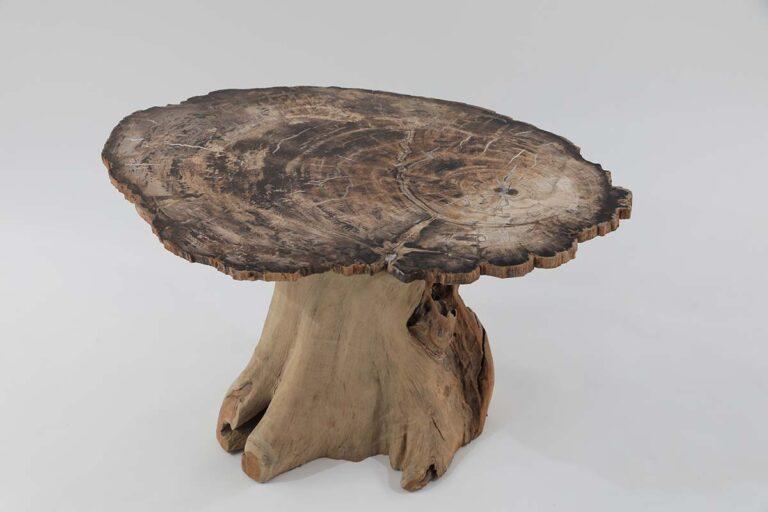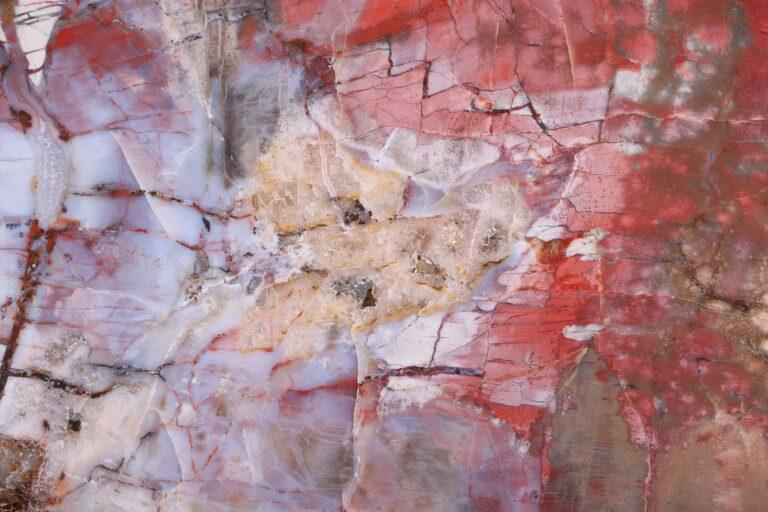A story with a big disclaimer, because it involves a lot of guesswork. However, we try to be guided by the most recent publications.
When we talk about petrified wood from Arizona, we are talking about a fossil, as well as minerals. Most fossils are an imprint of a plant or animal. However, when we talk about the petrified wood from Arizona, we are talking about a replacement fossil. All elements of wood were replaced with minerals, while maintaining the structure of the initial material.
We start the story in the Permian. From 299 to 252 million years ago.
The continents are concentrated in the supercontinent Pangea, which only begins to break up at the end of the Triassic. The rest of the planet was a huge ocean known as Panthalassa.
The climate was globally dry and warm.
Large contiguous land masses have continental climates and deserts were therefore widespread. The center of that huge landmass was dry and inhospitable, with temperatures reaching 45ºC.
The extreme temperatures revealed by climate simulations are supported by the fact that very few fossils are found in modern regions that once existed in the middle of Pangaea. It is believed that the strong contrast between the Pangea supercontinent and Panthalassa caused intense equatorial monsoons.
Sea level is relatively low despite the warm climate. This is due to the fact that the sea was deeper at that time than it is today.
The dry conditions gave nudibranchs an advantage over spore plants. Lycophytae (wolf’s claw) growing in swamps from the Carboniferous were replaced by conifers during the Permian, which were better able to withstand the drier climate. Many important groups of conifers, ginkgo and palm ferns developed and spread during the Permian.
The Permian was closed by the largest mass extinction in Earth history. 90% to 95% of all marine species, such as the trilobites, became extinct. 70% of all land-based species became extinct.
Which then with the Triassic leads to the start of many new species, including the first dinosaurs and winged pterosaurs, corals and early mammals.
Among plants, the Permian-Triassic extinction had not hit as hard; among other things, many species of conifers survived.
It is those conifers that will form the basis of Arizona petrified wood.
Toward the end of the Triassic, supercontinent Pangea breaks up. This involves large-scale volcanism from 213 to 208 million years ago. Possibly that is also the basis of the Triassic-Jurassic extinction.
That stormy period is the start for our petrified wood.
We are in the Chinle Formation, a sea level continental geologic formation from the Late Triassic of fluviatile (river), lacustrine (lake) and palustrine (marsh) to aeolian (wind) deposits scattered across the U.S. states of Arizona, Nevada, Utah, New Mexico and Colorado.
Storms beech on the Araucarioxylon arizonicum (an extinct conifer, best compared to Monkey Cane, a tree planted in many an urban garden in the 1960s and 1970s) in. A number of trees are uprooted and fall into the swamp. The trees fall to the bottom and given there is little movement in the marsh water, oxygen is very scarce. No oxygen also means (almost) no decay processes.
The next step in the process is the need for silicon. Silicon in the form of lava. At several sections, you can literally see how the swirling lava has come into direct contact with the tree.
We now have an oxygen-poor and water-rich environment, and a gigantic source of silicon (base of quartz).
Now we need a little imagination. Mother Nature and Father Time, from now on, go about their business in incredible ways with what was made available to them. As the tree decays at a tremendously slow rate (may take thousands or millions of years), the silicon will begin to fill in any free space. Those free spaces are a result of the decay of the tree, but also natural cracks, holes created by insects, fungi, and so much more.
As if those two Artists were holding a brush with one hair and touching point by point in 3 dimensions.
The silicon becomes quartz and takes on the colors of the chem ements and oxides that are all around it. The most common colors in Arizona are rust (iron oxide), black (manganese oxide), pink (manganese), yellow (iron oxide) and white / translucent / gray at times when there were few oxides in the environment.
We find very few evenly colored pieces, this is due to the time our two Artists took to finish their paintings. Where the trees were initially at sea level, the Petrified Forest National Park now averages 1,650 meters above sea level. So our trees have come a long way. During that journey, we encounter different oxides, which help shape our painting each time.
An incredible process, nature at its best, fossil and mineral in one, a painting of purity.
Kobe Dewaele
artfossil
www.artfossil.be





